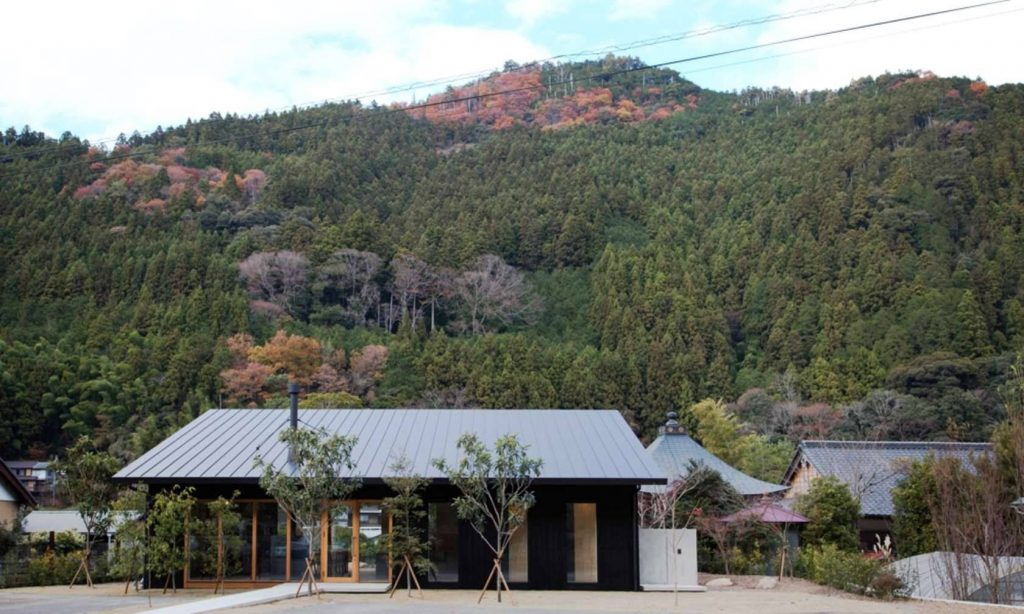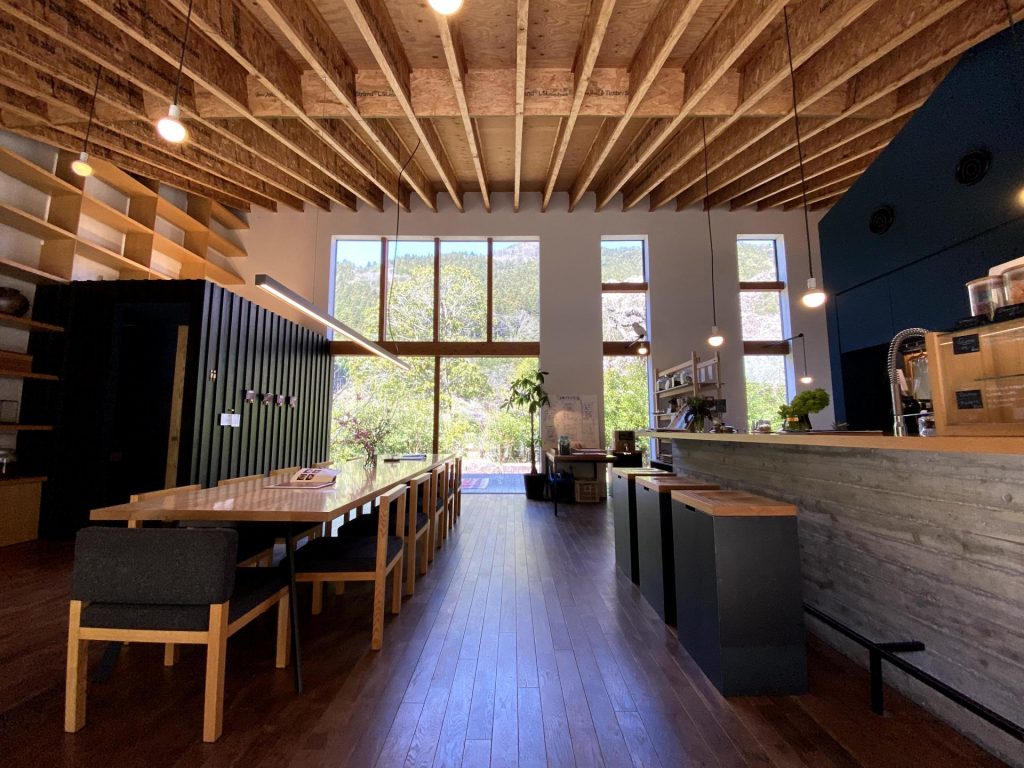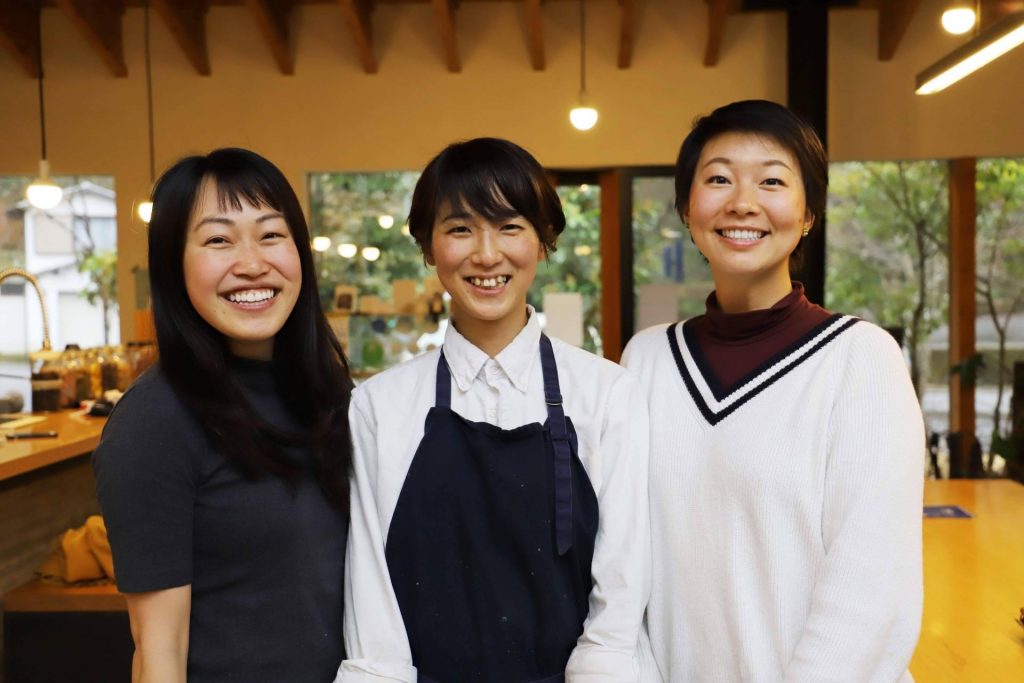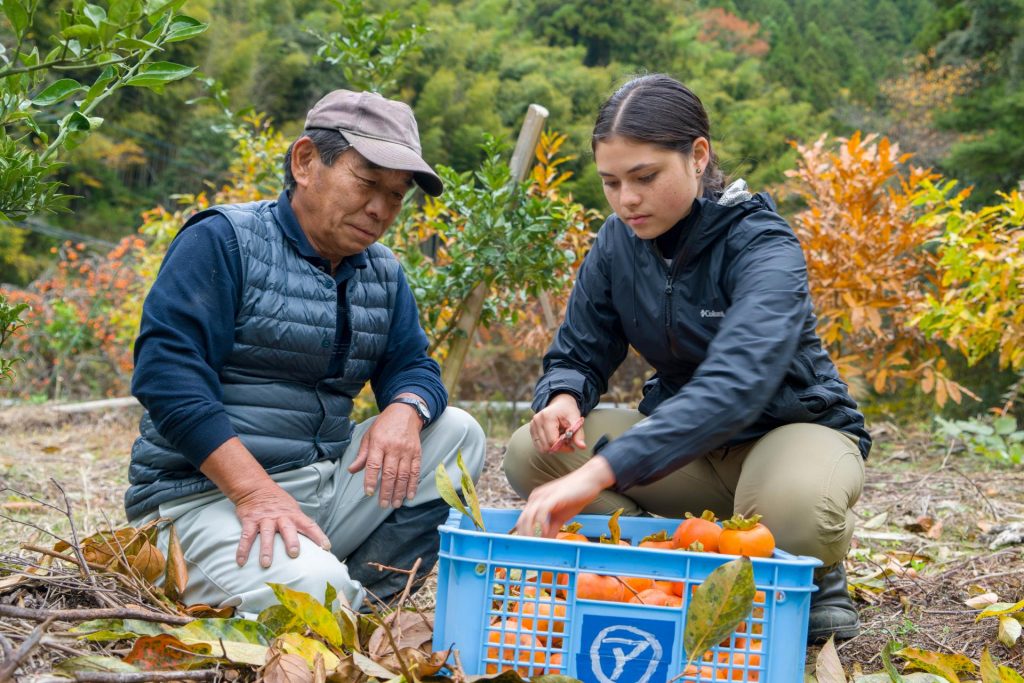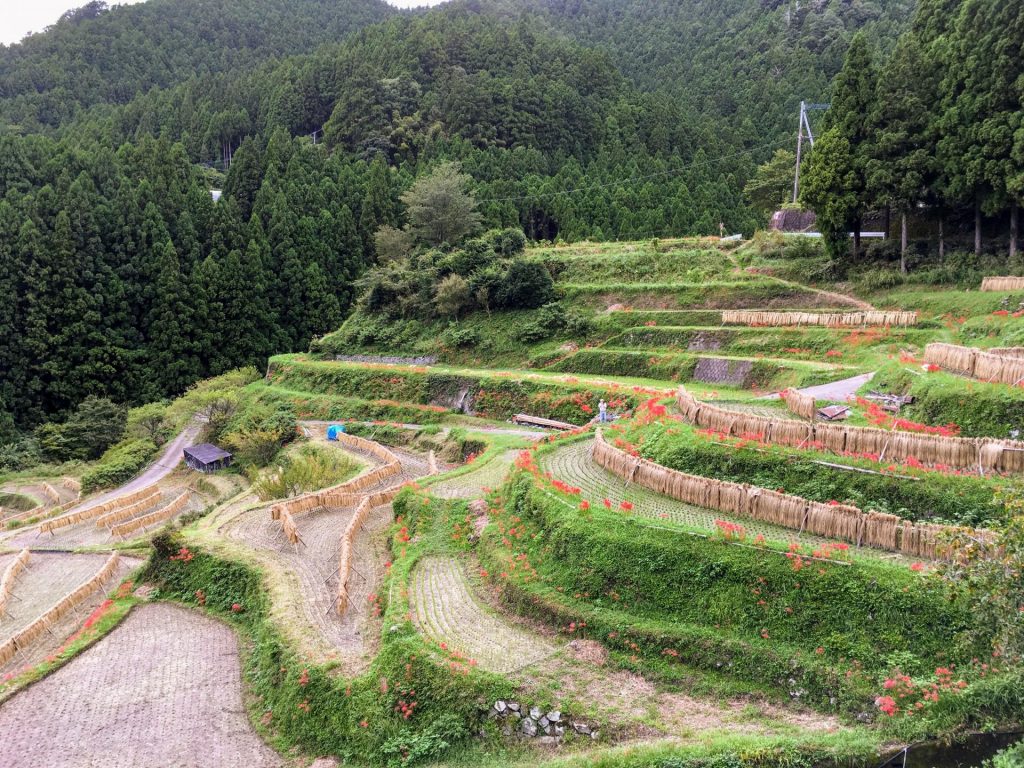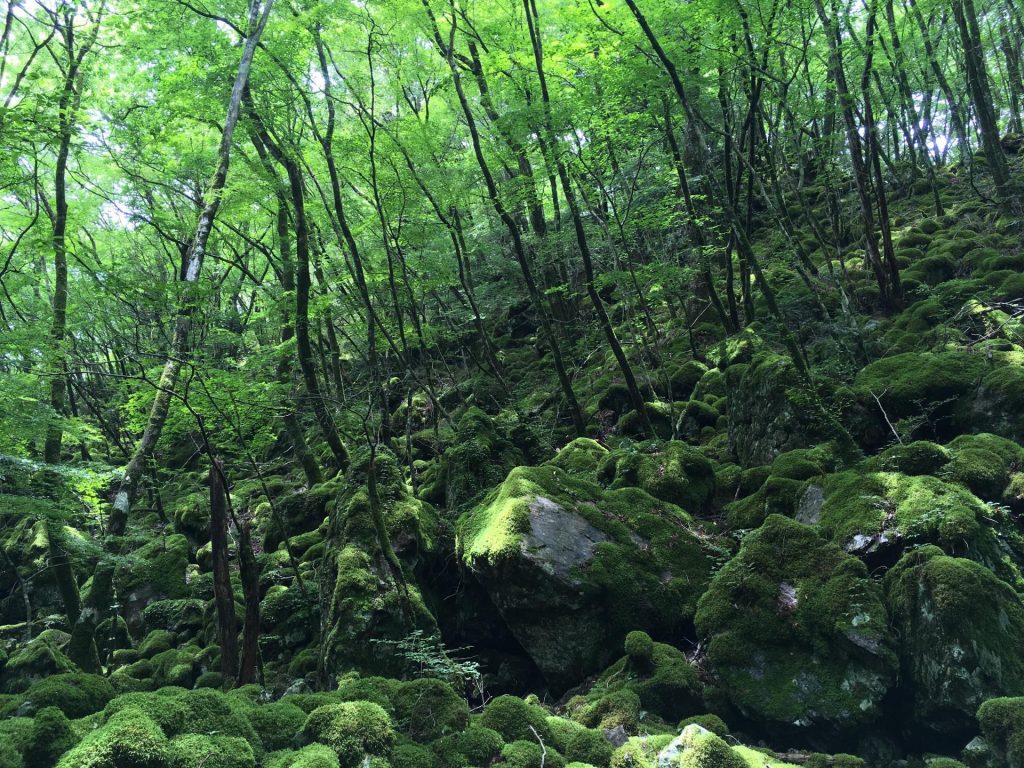Kamikatsu: Japan’s First Zero Waste Village
It is a sunny day, the first one in a while following the slew of rain pouring in from the heavens just beyond the cedar-lined mountains. Osamu Nakamura takes this opportunity to bring out the long branches of fallen cedar he’s collected out into his backyard, where he will hand cut them to size. You can tell this is a practiced skill by all the neat stacks of wood organized from thin twigs to thick pieces the size of forearms, layered neatly keeping dry under the awnings.
“The seasons are changing. Every year there is a big storm right before the they change. This year it’s the rain. Spring is about to come,” he says while he works. Seventy-four-year-old Nakamura-san is a long-term resident of Kamikatsu Village. You may know the name Kamikatsu from the recent surge in popularity revolving around buzzwords such as “sustainability” and “SDGs.” Just a quick search into YouTube and any number of videos will pop up regarding this tiny village (population 1,500)—the smallest on Shikoku Island, itself the smallest of Japan’s four main islands. So, what has caused this sleepy, mountainous town located in Tokushima Prefecture to be featured in the likes of the New York Times, Bloomberg, and The World Economic Forum?
It all started back in 1997, when the municipal government of Kamikatsu first created a separation system for waste into nine categories, which was nearly unheard of in Japan at the time. The system wasn’t perfect by any means. In fact, it was being operated in conjunction with an open incineration scheme that was understandably bad for both human health and the environment. Kamikatsu learned from its early mistakes and quickly got rid of open incineration altogether. Over the next several years the village government expanded its original separation system first up to 22, then 35 and finally to the current figure of a whopping 45 categories.
In 2003, Kamikatsu became the first municipality in Japan to declare for Zero Waste with the lofty goal of becoming a place that would produce no garbage by 2020. Although the 2020 year mark came and went with the village unable to meet such an ambitious target, Kamikatsu’s Zero Waste initiative still sees the village recycling up to 80% annually of their total waste, compared to a Japanese national average of just 20%.
Back at home with Nakamura-san, he makes tea on his handmade stove over a fire made from freshly cut firewood. It feels far removed from the influence of any eco buzzwords or greenwashing. He lives up in the mountains of Kamikatsu in a beautiful old Japanese house he renovated by hand out of an old barn.
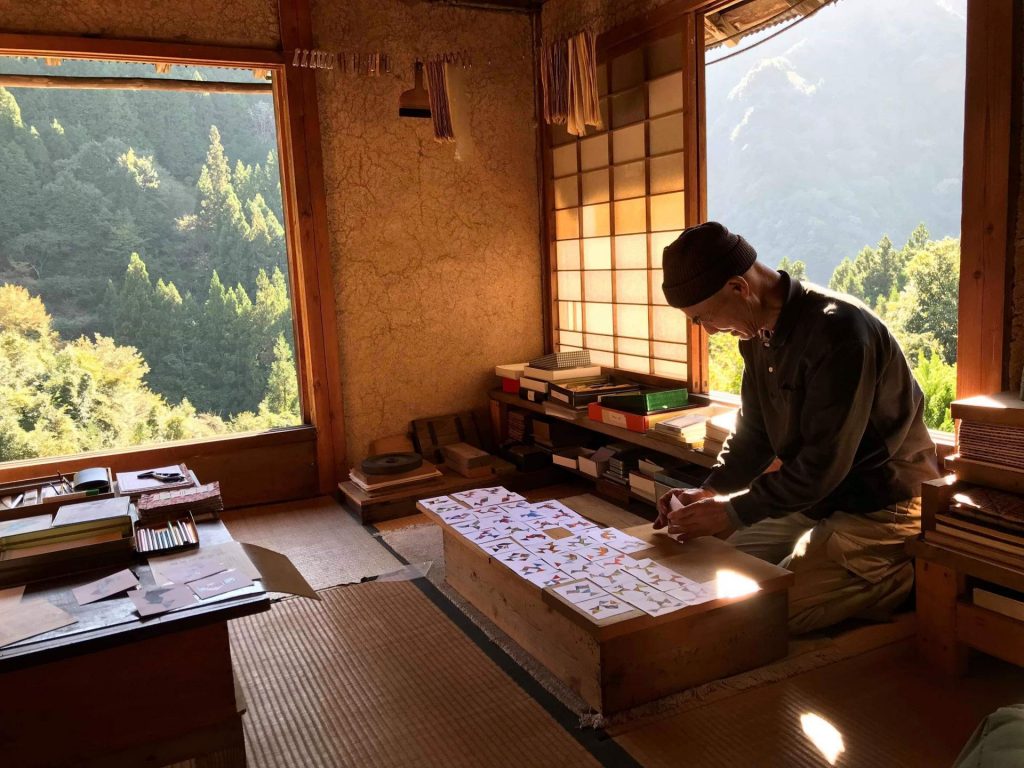
Osamu Nakamura at his home in Kamikatsu
“Before coming to Kamikatsu, I was traveling for 15 years. I had been to many countries and seen many different ways of living. That’s why I decided to come here and create a life of my own. It is very difficult to have both time and money, but I thought if I worked hard, I could grasp both in my hands. That’s why, when I came here, I thought it would be great if I could realize a life with as little money as possible.”
Nakamura-san lives his life sustainably by being completely independent from a consumerist system to survive. He does not drive a car, grows his own vegetables year round and cooks using a firewood stove that also heats his home. There are just three lightbulbs in his house, and he makes his own compost toilet. This may sound extreme to some, but then again, shouldn’t we all be questioning how much we really want to solve the climate crisis when most of us are driving around gasoline-fueled cars and purchasing factory-made products shipped internationally?
Of course, it is unrealistic to think that one small village could provide the answers to the world’s problems. But what Kamikatsu does is provide an example of what it can look like when people gather together to work for a common goal. It is a crossroad, a place where elders living as a testimony to sustainability can mingle with the younger generation eagerly wishing to gain this knowledge for themselves.

Rise&Win Brewing Co. in Kamikatsu
Examples of new and old coming together can be seen directly in the red facade of Kamikatsu’s Rise&Win Brewing Co., a Portland-style craft brewery designed by reusing salvaged windows from abandoned homes in the village. The brewery also aims to work with local farmers by purchasing local ingredients to brew with, and returning spent grain to farmers as compost.
Rise&Win Brewing Co.
Tel: (088) 545-0688

Cafe Polestar in Kamikatsu 
Cafe Polestar in Kamikatsu
Café Polestar is owned by Terumi Azuma. Azuma was born and raised in Kamikatsu and her mother, Hitomi Azuma, was the founder of the Zero Waste initiative here. Customers can purchase goods in bulk such as cookies, coffee, rice and soy sauce by bringing their own containers at the café. They can also experience a sense of the seasons; the lunch menu changes daily depending on what’s available at the local market.
“For me, Zero Waste is a way to understand myself. When you live in Kamikatsu, you will not only know about waste, but also about the time you have, what you spend your effort on, how you spend your money and how waste is produced as a result. By finding the balance of these factors, you will be able to find what makes you feel happy,” says Azuma.
Asked about whether life is inconvenient in the countryside, like living in one of the few remaining places in Japan that does not have a convenience store, Terumi says, “I think it’s interesting that even in a place with an absence of all kinds of conveniences, ideas are being born about how to live happily and reduce waste to zero.”
Café Polestar
Tel: (088) 546-0338
Hours: Cafe: 10 a.m. – 3 p.m.
Co-working Space: 3 p.m. – 5 p.m.
Closed Thursdays and Fridays
For many visitors, the draw of visiting Kamikatsu starts with the desire to learn about their unique waste-separation system. But it becomes apparent quickly that this system is not something that can be absorbed by merely observing. In order to truly understand the village’s take on zero waste, one has to be fully immersed into it.

The INOW team: Kana Watando, Terumi Azuma and Linda Ding
The INOW Program is a homestay program that was formed to bridge the gap. It was founded in 2020 by Terumi Azuma along with Linda Ding and Kana Watando, two Canadians living in Kamikatsu. The program welcomes guests to experience Kamikatsu as a local by living side by side with residents for an extended period of time. Participants can practice waste separation on a daily basis and other sustainability-minded practices such as traditional crafts and organic farming. Each iteration of the INOW program is unique, as it is customized to the needs of the guest and their specific interests to visit Kamikatsu.
Kamikatsu’s landscape is 90% forest, while the remaining 10% of land is made up of 55 settlements, some of which consist of only one home. There are many beautiful trails to be hiked or cycled. A popular cycling route starts at nearby Tokushima City to Kamikatsu (about 40 minutes by car). Popular hikes in the area include a trek up to Mt. Yamainudake, where you can see a rare vista of a moss forest. On the way to the trailhead you will pass by the Kashihara Rice Terraces, voted one of the “100 Most Beautiful Terraces in Japan.” Visit in summer to see the lush green of young rice, or in autumn to catch the golden stalks of ripe grain.

Kashihara Rice Terraces 
Moss Forest at Mt. Yamainudake in Kamikatsu
Though Kamikatsu has a twenty-year history of building a sustainable framework, the work here is far from done. But with renewed attention towards this sleepy village both internationally and at home, Kamikatsu is finding the conviction to aim for a stronger standard towards sustainability than ever before. The mingling of new minds and old ideas can can contribute to a better future we all hope to achieve together.
Getting There
To get to Kamikatsu, you can take the bus or train to Tokushima Station (30 minutes from Tokushima Awaodori Airport via the Tokushima-Airport Limousine Bus). From the station, take Bus 82 to Yokose-Nishi. You will be dropped off at the Yokose-Nishi bus stop close to Kamikatsu. From there, take the local Kamikatsu bus directly into the village. Consider getting off at the Onsen Iriguchi stop to visit Café Polestar and Tsukigatani Onsen’s scenic river views.
Kamikatsu: Japan’s First Zero Waste Village





